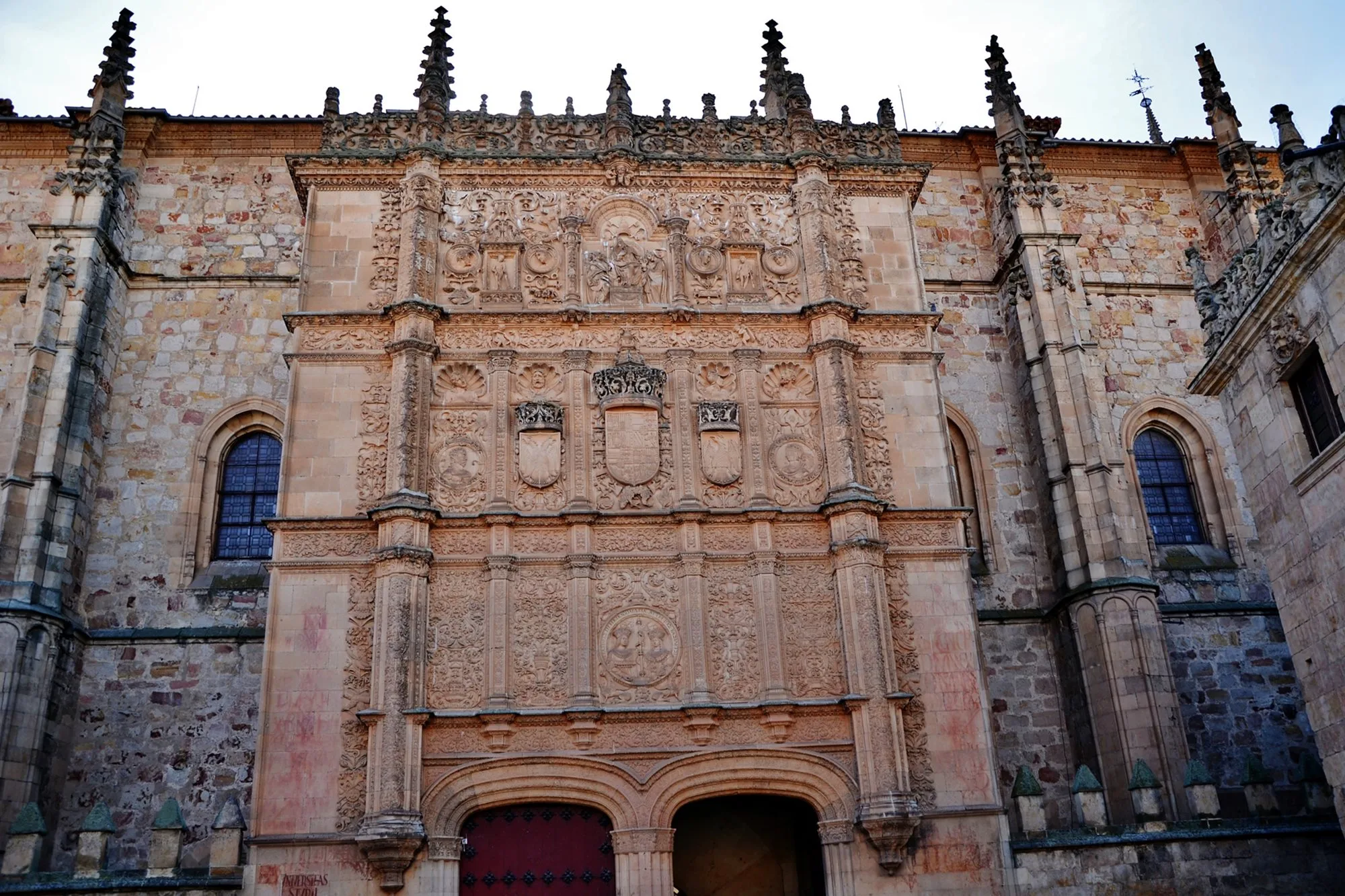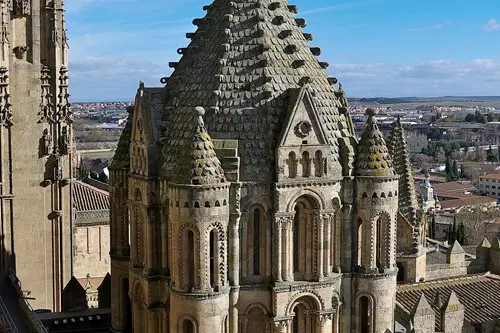
Cookie settings
We use our own and third-party cookies in order to offer our services, display videos, obtain statistics and offer personalized advertising.
For more information, please read our cookies policy.

In 1218 the king Alfonso IX de León founded the University as a General School. It is a square building whose façade consists of three superimposed bodies that are separated by their corresponding freizes and crowned by a cresting. They are divided, in a vertical plan, by five bays that are framed between pilasters, and some people consider it as an allegory to the vices and virtues.
In the first body that is worked in half relief we can see the medallion with the Catholic Kings´ images. Over one of the skulls, we can see the representation of a frog, symbol that many people associate with the sin, although according to the student mythology it is linked to the success in studies.
We can find Carlos I´ s coat of arms in the second body.
In the third body, the figure of a Pope, maybe Benedicto XIII or Martín V´ s, and Venus and Hercules´ s images appear between medallions.
It seems that the façade is a huge and rich tapestry. Juan de Troyes, the master Egidio or Juan de Álava should be highlighted among its authors. The library has around 400 incunables from the XV Century, and a great number of volumes and manuscripts.
It appears enclosed by beautiful iron railings from the XVI Century.
Built: XVI Century (1529- 1533)
Author: Anónimo
Style: Plateresque
Category: Civil
Type: University
Address and telephone
Opening times
Prices
If you see any mistakes or want to add anything to this information, please contact us.




Book your hotel